Written by: Annie Ieong Y13 IB Visual Art HL student
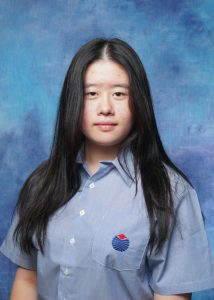 This September, I participated in an overnight Art Excursion to Beijing with fellow IGCSE and IB Visual Arts students. Although the trip was only three days long, the experience that I acquired during this trip was fascinating, and inspired me in various ways.
This September, I participated in an overnight Art Excursion to Beijing with fellow IGCSE and IB Visual Arts students. Although the trip was only three days long, the experience that I acquired during this trip was fascinating, and inspired me in various ways.
We stayed in the center of the Beijing art scene called the ‘798 Art District’. Different from the art zone in Shanghai, ‘798 Art District’ was filled with works of art. By that, I mean graffiti work done by street artists that you could find on almost every single wall, the ‘random’ sculptures that hide in the street corners, and the painted red bus that turned into an art classroom.
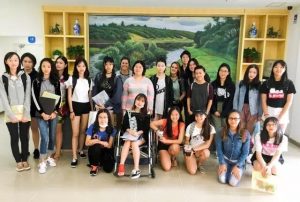
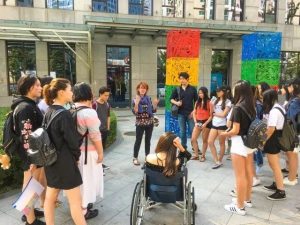
Our task as IB Visual Arts students was to study the ways different artists present their works. The way those artworks were shown to the public in this area was especially thrilling for us because they challenge the traditional ways of what is an ‘exhibition’, which is to be placed in a formal gallery space; these works of art are placed outdoors in relatively public areas. This could be a trend that implies that art is no longer for the ‘privileged’ class in the contemporary world. Instead, it is for everyone to experience.


I also did an artistic experiment with my peers in IB Visual Art. We started working on our sketchbook ideas sitting on the ground inside of a sculpture work. Within the thirty minutes that we were there, people who came to the gallery kept on trying to step inside and were more curious about what we were doing rather than the sculpture itself. At that moment, it was almost as if we had become part of the artwork, or we had changed the meaning and context of it.
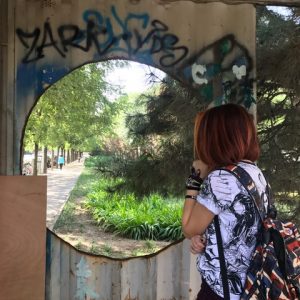

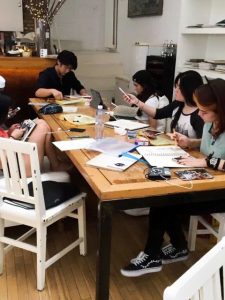 After we returned from Beijing, I made an interview/vlog for the trip, mainly focusing on what we learned and how the process of learning is effective as a way of art education. We learned through our observations while exploring the district, self-reflecting and understanding the responses that we give to the works. In the end, we gathered together in a café to share our thoughts with peers while listening to others’ ideas.
After we returned from Beijing, I made an interview/vlog for the trip, mainly focusing on what we learned and how the process of learning is effective as a way of art education. We learned through our observations while exploring the district, self-reflecting and understanding the responses that we give to the works. In the end, we gathered together in a café to share our thoughts with peers while listening to others’ ideas.
Being in an open space with a casual and relaxing environment helped to provoke thoughts and allow us to make more linkage between the works with our daily life – that could be something we rarely think of when we are in the classroom. This rare opportunity also allowed the IB students to step out from our heavy academic workload, and become closer to the students from other year levels who brought unique perspectives to our discussions that we would not have thought of while staying in our own community.